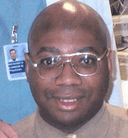What is a Stroke?
A stroke is a medical condition that causes damage to the brain. Stroke is a term doctors use when part of the brain is damaged because of a problem with blood flow.
There are two types of strokes: ischemic and hemorrhagic. Ischemic strokes are caused by blockages in the blood vessels that reduce or limit blood supply to areas of the brain. This happens when an artery going to the brain gets clogged or closes off which results in damage to part of the brain that went without blood for too long. Ischemic strokes account for 87% of all strokes.
A hemorrhagic stroke is damage caused to the brain due to ruptured blood vessels. This happens when an artery in the brain breaks open and starts bleeding into or around the brain. Hemorrhagic strokes are less common and account for 13 % of all strokes.
Reduced blood flow causes brain damage. Both ischemic and hemorrhagic strokes are considered medical emergencies.
Stroke Causes
Strokes are caused by a variety of factors such as genetic and environmental factors. Some of these factors are modifiable which means you can control the ability to reduce risks.
Modifiable risk factors are factors you can personally modify in order to reduce your risk of developing a stroke. Some modifiable risk factors include:
Take prescription medications as prescribed
Eat a low fat, healthy diet
Exercise
Quit smoking if you smoke
Maintain a healthy BMI
Reducing high blood pressure by taking hypertension medications, eating healthy and staying physically active.
Non-modifiable risk factors are factors that you have no control over and cannot change. Non- modifiable risk factors include:
Age
Sex
Race and Ethnicity
These are all modifiable and nonmodifiable risk factors for both ischemic and hemorrhagic strokes.
Related: What Causes High Blood Pressure?
Stroke Symptoms
Signs and symptoms of a stroke are common and consistent between men and women. Symptoms of a stroke usually come on fast and without warning.
There is an easy way to remember the signs of a stroke. The acronym "FAST" is used to point out symptoms of a stroke quickly and easily. Each letter in the word FAST stands for one of the things you should watch for:
Face: Does the person's face look uneven?
Arm: Does the person have weakness or numbness/tingling in one or both arms? Does one arm drift downward if the person tries to hold out both arms?
Speech: Does the person have trouble speaking, slow-paced speaking, garbled or unclear speech?
Time: If you notice the above changes in the person, these are signs of a stroke and is a medical emergency. Remember to act FAST because time lost is brain tissue lost. The sooner treatment begins the better the chances of recovery and positive outcomes.
Some experts add “BE” in front of FAST making the acronym “BE-FAST” which suggests the need to act quickly as well as other signs of a stroke such as balance and vision changes.
Balance: Does the person have difficulty standing or walking?
Eyes: Does the person have vision changes such as blurry, doubled or loss of vision?
BE-FAST can be applied to both men and women as a tool to identify stroke symptoms and the need for quick diagnosis and treatment.
Stroke Diagnosis
Strokes can be diagnosed by completing diagnostic tests. The most common diagnostic test used to identify a hemorrhagic stroke is a CT scan, while the most common diagnostic test used to identify ischemic stroke is an MRI.
Oftentimes, doctors will know the patient is having a stroke based on physical symptoms, but these diagnostic tests confirm areas and involvements of each stroke.
Stroke Treatment
The right treatment depends on which stroke type you are having and how quickly you sought out treatment. In order to figure out which type of stroke you are having, you should get to the nearest hospital very quickly.
Ischemic stroke treatment includes:
Getting treatments to help reopen clogged arteries such as a thrombectomy.
Take medicine that can dissolve the blood clot within minutes to hours.
Taking medication to prevent future blood clots from forming which can prevent future strokes.
Identifying the underlying cause and treating that cause such as high cholesterol or high blood pressure.
Hemorrhagic stroke treatment includes:
Getting treatments that may reduce pressure in the brain such as a craniotomy.
Discontinue taking medications that may cause bleeding to continue.
Have surgery to treat the blood vessel and prevent future bleeding (this is not always possible).
Immediate medical treatment once symptoms of a stroke are identified is the main treatment for a stroke. Strokes are considered medical emergencies and can have a negative impact on people’s health and well-being.
Effects of a Stroke
The aftermath of strokes can affect a person’s daily living, overall wellbeing, as well as the lives of loved ones around them. The effects of a stroke depend on many things including:
Determining which part of the brain is affected. Some areas affect speech, swallowing, body movement and cognition more than other parts.
How large the stroke is which determines how much damage has been done.
How quickly the stroke was treated.
Some people are more affected than others. Some people who have a stroke have no lasting effects, while others are left paralyzed and unable to speak. After a stroke, the effects are not known for a few months. Sometimes, long term effects of a stroke will last a lifetime, while other times, stroke symptoms get better over time.
According to the American Stroke Association, strokes are one of the leading causes of death and disability in the world. Stroke prevention is key to preventing stroke disability and death in the United States.
PlushCare cannot treat a stroke or stroke symptoms. If you have a life-threatening injury or illness, such as stroke symptoms, major injuries, and serious allergic reactions, then you need to go to the emergency room (ER).
For virtual primary care visits, book an appointment with an online doctor at PlushCare today.
Read More About Stroke Symptoms
Sources:
PlushCare is dedicated to providing you with accurate and trustworthy health information.
American Stroke Association. Types of Strokes. Accessed on July 25, 2021 from
https://www.stroke.org/en/about-stroke/types-of-stroke/hemorrhagic-strokes-bleeds
American Stroke Association. Stroke Symptoms. Accessed on July 25, 2021 fromhttps://www.stroke.org/en/about-stroke/stroke-symptoms
Centers For Disease Control and Prevention. Stroke Signs and Symptoms. Accessed on July 25, 2021 from https://www.cdc.gov/stroke/signs
Mayo Clinic. Stroke. Accessed on July 25, 2021 from https://www.mayoclinic.org/diseases-conditions/stroke/symptoms-causes/syc-20350113
American Heart Association. Heart Attack, Stroke and Cardiac Arrest Symptoms. Accessed on July 25, 2021 from https://www.heart.org/en/about-us/heart-attack-and-stroke-symptoms




